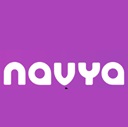Agentic AI Comparison:
Navya Autonomous Vehicles vs Waymo
Introduction
This report compares two prominent autonomous vehicle companies: Waymo and Navya Autonomous Vehicles. Both are at the forefront of self-driving technology, but they have different approaches and target markets.
Overview
Waymo
Waymo, a subsidiary of Alphabet Inc., is a leader in autonomous driving technology. They have developed the Waymo Driver, a fully autonomous driving system that has been tested extensively in various conditions. Waymo focuses on ride-hailing services and has expanded operations in several U.S. cities.
Navya Autonomous Vehicles
Navya is a French company specializing in autonomous shuttle buses. Their flagship product, the Autonom Shuttle Evo, is designed for first and last-mile transportation in urban areas and private sites. Navya's vehicles are primarily used in controlled environments at lower speeds.
Metrics Comparison
autonomy
Navya Autonomous Vehicles: 7
Navya's shuttles are fully autonomous in controlled environments. They use LiDAR, cameras, and GPS for navigation, but typically operate in more predictable settings and at lower speeds.
Waymo: 9
Waymo's autonomous system is highly advanced, capable of handling complex urban environments without human intervention. It uses a combination of LiDAR, radar, and cameras, along with sophisticated AI for decision-making.
Waymo's system demonstrates higher autonomy in more diverse and challenging environments, while Navya's autonomy is strong but limited to more controlled settings.
ease of use
Navya Autonomous Vehicles: 9
Navya's shuttles are designed for easy boarding and accessibility, including for persons with reduced mobility. The fixed-route nature of their operation makes them simple to use for passengers.
Waymo: 8
Waymo's service is user-friendly, accessible through a mobile app similar to other ride-hailing services. Passengers don't need to interact with the vehicle's controls.
Both systems are user-friendly, but Navya's fixed-route shuttles may be slightly easier for the average user, especially those with mobility issues.
flexibility
Navya Autonomous Vehicles: 6
Navya's shuttles typically operate on fixed routes in predetermined areas, which limits their flexibility but enhances their reliability for specific use cases.
Waymo: 9
Waymo offers point-to-point transportation similar to traditional taxis, allowing for flexible routing and destinations within their operational areas.
Waymo's system offers significantly more flexibility in terms of routes and destinations, while Navya's shuttles are more constrained but excel in their specific use cases.
cost
Navya Autonomous Vehicles: 7
While specific pricing isn't available, Navya's shuttles are designed for cost-effective first/last mile transportation. The fixed routes and lower speeds likely contribute to lower operational costs.
Waymo: 6
Waymo's service is currently more expensive than traditional ride-hailing services. A study found that Waymo rides cost on average $9.50 more than comparable human-driven rides.
Navya's solution appears to be more cost-effective for its specific use case, while Waymo's service currently comes at a premium compared to traditional ride-hailing.
popularity
Navya Autonomous Vehicles: 6
Navya has deployed its shuttles in various locations globally, but its market is more niche. It has gained recognition in the autonomous shuttle sector, winning awards for endurance, reliability, and consumer experience.
Waymo: 8
Waymo has gained significant attention and usage in the cities where it operates. It has completed millions of miles in autonomous mode and has a growing user base.
Waymo has broader recognition and usage in the general autonomous vehicle market, while Navya has carved out a strong niche in the autonomous shuttle sector.
Conclusions
Both Waymo and Navya Autonomous Vehicles are making significant strides in autonomous transportation, but with different approaches and strengths. Waymo excels in flexibility and advanced autonomy for general-purpose transportation, making it suitable for diverse urban environments. Navya, on the other hand, offers a more specialized solution for controlled environments, with strengths in accessibility and ease of use for fixed-route transportation. Waymo's technology appears more advanced and versatile, but comes at a higher cost. Navya's focused approach allows for efficient operations in specific scenarios. The choice between the two would depend on the specific use case and environment. For general urban transportation, Waymo currently holds the edge, while Navya presents a strong option for controlled, fixed-route applications.

